By Arnold Blumberg
The strategic defeats suffered in the Battles of the Coral Sea and Midway checked Japan’s advance in the Pacific. The engagements, which cost the Japanese over 400 carrier and landbased aircraft and five aircraft carriers, forced Tokyo to assume a defensive posture.
As part of its new military reality in the Pacific, Japan still relied on its plan to secure its strongest naval bastion in that area, Truk in the Caroline Islands some 1,600 miles northeast of New Guinea, by strengthening its recent acquisition of Rabaul on New Britain in the Solomon Islands, and building a major base there. To safeguard Rabaul, forces were landed in eastern New Guinea, Guadalcanal, and Tulagi in the southern Solomons chain.
By holding fortified air bases at these locations, the Japanese could meet Allied air and amphibious attacks by shuttling their own air assets from base to base. This strategy was employed in anticipation that the United States might push its inevitable counterattack through Port Morseby, Rabaul, and Tulagi as an alternative or complement to its obvious strategy of attacking across the Central Pacific toward the home islands of Japan.
By mid-June, the Japanese program designed to establish airfields in the Solomons, including Guadalcanal (construction commencing there on July 6), Florida, and Savo Islands, was authorized. Its primary purpose was to use airpower to cut communications between the United States and Australia and forestall American offensive operations. The threat to vital American supply bases in New Caledonia, the New Hebrides, and Fiji was also an important reason for the expansion of the Japanese defensive perimeter.
The Americans planned to parry the enemy’s plan by capturing Tulagi and the Santa Cruz Islands and setting up their own airfield somewhere in that zone to support an advance toward New Britain and New Guinea. On June 24, 1942, Admiral Chester W. Nimitz, Commander in Chief U.S. Pacific Fleet, was ordered to prepare to capture “Tulagi and adjacent positions.” It was not until July 5, when definitive intelligence revealed that the Japanese were preparing to build an air base on the island of Guadalcanal, that the Americans dropped the Santa Cruz Islands from their forthcoming amphibious assault, instead preparing to move against Guadalcanal. Tulagi remained a target, albeit now a secondary one, to be occupied simultaneously with Guadalcanal.
Tulagi’s Strategic Importance
The island of Tulagi is two miles long and a half mile wide; it lies just south of Florida Island and 22 miles directly north across Sealark Channel from Guadalcanal. A ridge rising over 300 feet above the sea marks the northwest-southeast axis of the island. About two-thirds of the way down from its northwest tip, the ridge is broken by a ravine and then rises again in a triangle of hills, the farthest southeast designated Hill 208 and the farthest northeast Hill 281 after their elevation in feet.
Tulagi had been the seat of the British Solomons Island Protectorate with the governor’s residence and other governmental structures located on its northeast side. About 3,000 yards east of Tulagi are the small islets of Gavutu and Tanambogo joined by a 500-yard long causeway. Gavutu Harbor on the northeast end of the island and Purvis Bay to the southeast of Gavutu and Tanambogo formed the finest deepwater anchorage in the Solomons.
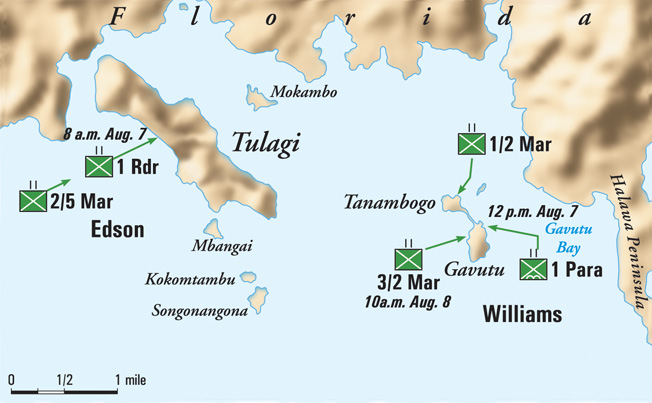
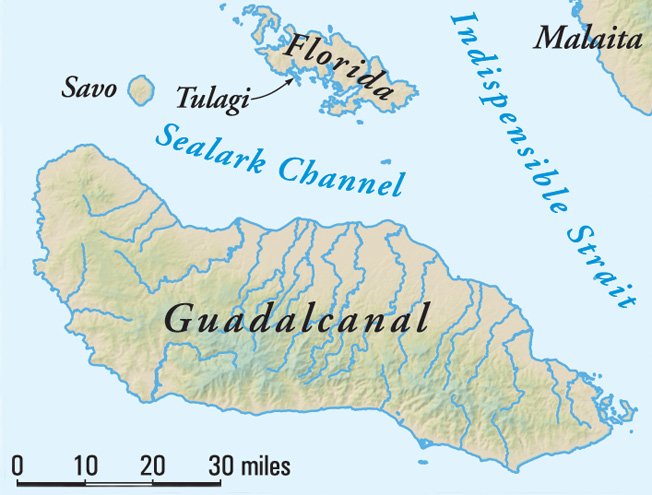
To protect Tulagi, Gavutu, and Tanamabogo the Australians stationed only two dozen soldiers and 130 native policemen along with crew and maintenance personnel who operated the four Consolidated PBY Catalina flying boats assigned for patrol duty there. After the Japanese began regular bombing of the islands in January 1942, the Australian government evacuated the civilian population. The tiny defense force was taken off on May 2, one day before the Japanese Army occupied Tulagi while also installing small garrisons on Gavutu and Tanamobogo. Concerned about the ability of the enemy to conduct long-range air rreconnaissance from Tulagi, in late May Admiral Nimitz urged that the island be reoccupied using the 1st U.S. Marine Raider Battalion. However, his idea was rejected by General Douglas McArthur, commander of U.S. ground forces in the Pacific, citing the shortage of combat troops available to hold the place once it was retaken.
On May 3, 1942, the Japanese invaded Tulagi. The ground troops were from the 3rd Kure Special Naval Landing Force (SNLF). Sometimes erroneously referred to as Japanese Marines, these were a peculiar hybrid of sailors used as landing parties, specially trained in amphibious warfare. After taking Tulagi, the Japanese constructed a seaplane, ship refueling, and communications base on the island with supporting facilities on Gavutu, Tanambogo, and Florida Island.
The First U.S. Ground Offensive of World War II
The amphibious assault on Guadalcanal and Tulagi was the first U.S. ground offensive of World War II. Designated Operation Watchtower, the hastily thrown together plan called for the 1st Marine Division, about 19,000 men, supported by American and Australian warships and transport vessels, 82 ships of all types, to make the seaborne assault. The Allied armada assembled near Fiji on July 26. A poorly planned and executed rehearsal, Operation Dovetail, was held on Koro Island in the Fijis, after which the fleet sailed for its objectives on the 31st.
As the Allied fleet neared Guadalcanal, it split: the Guadalcanal Group, made up of Combat Group A composed of the 1st and 5th Marine Regiments, the divisional artillery, and support units (11,300 men), under 1st Marine Division commander Maj. Gen. Alexander A. Vandegrift, headed for Lunga Point on Guadalcanal. The Northern Group, built around four Marine infantry rifle battalions (2,400 troops), led by assistant division commander Brig. Gen. William H. Rupertus, steered for Tulagi, Florida, Gavutu, and Tanambogo.
Guadalcanal vs Tulagi: Two Very Different Battles
At 9:10 am, August 7, 1942, the first wave of Marines of Combat Group A scrambled ashore on Guadalcanal between Koli Point and Lunga Point, quickly establishing a 2,000-yard-long, 600-yard-deep beachhead. Their surprise arrival met no organized Japanese ground resistance. Approximately 2,500 laborers, mostly Korean, of the 11th and 13th Construction Unit along with the few dozen regular Japanese soldiers melted into the island’s hinterland as the Americans came ashore. The only threats to the leathernecks that day came from a number of mostly ineffective Japanese air raids launched from Rabaul. By nightfall the Americans had carved out a mile-deep toehold on Guadalcanal. They halted for the night about 1,000 yards from the unfinished Japanese airfield near Lunga Point. The next day, August 8, the Marines, meeting only sporadic enemy resistance, advanced to the Lunga River and at 4 pm captured the airdrome.
The main Marine force that came ashore on Guadalcanal encountered more difficulty with the island’s foreboding jungle terrain, oppressively hot weather, and the confusion the inexperienced Americans had with offloading men and supplies than it did with the Japanese. It was a different and deadly story for General Rupertus’s command, which hit the beaches at Tulagi, Gavutu, and Tanambogo that same day.
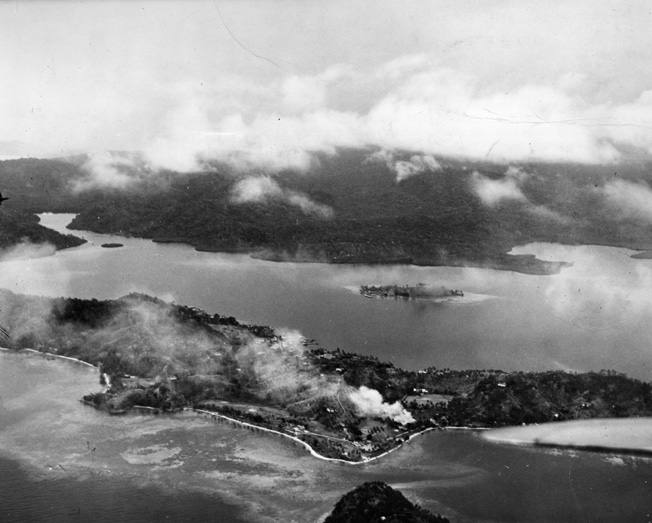
At 6:52 am on the morning of August 7, 1942, Japanese troops on Tulagi began to send a flood of radio transmissions in the clear reporting 20 enemy ships shelling the island accompanied by air attacks and seaborne forces. At 8:05 am, Tulagi signaled that the island’s defenders were destroying their papers and equipment and signed off with the message, “Enemy troop strength is overwhelming. We pray for enduring fortunes of war,” and pledged to fight “to the last man.”
Landing on Beach Blue
The Japanese garrison on Tulagi consisted of a 350-man detachment of the 3rd Kure SNLF under Commander Masaaki Suzuki, 536 naval members of the Yokohama Air Group, and some Japanese and Korean civilians from the 14th Construction Unit. About 900 soldiers under the supervision of Captain Shigetoshi Miyazaki, commander of the seaplane-equipped Yokohama Air Group, were in residence on Gavutu and Tanambogo. Making good on their promise, the Japanese on Tulagi did fight almost to the last man while exacting a heavy price on their American opponents.
The Marines assaulting Tulagi were carried to their objective by Transport Group Yoke, consisting of three troop transports, four Navy transport-destroyers, and one cargo ship. The landing force was made up of the 1st Raider Battalion; 1st Battalion, 2nd Marine Regiment; 2nd Battalion, 5th Marine Regiment; and 1st Parachute Battalion. These were the best trained units in the division and expected a tough fight. That assumption, which proved to be spot on, was based on prebattle intelligence assessments that Tulagi and the other islands were held by several hundred elite Japanese SNLF personnel of proven fighting ability who were well dug in.
Preinvasion aerial reconnaissance revealed that the strongest defenses on Tulagi fronted the northeast and southeast shorelines. Therefore, the Marines selected a 500-yard stretch of beach (named Beach Blue) midway on the southwest side of the island for the landing. The invasion plan called for elements of the 1st Battalion, 2nd Marines to secure flanking positions on Florida Island followed by the 1st Raiders and then the 2nd Battalion, 5th Marines going ashore on Tulagi. The idea was to make the first American amphibious assault of the war against natural obstacles instead of enemy firepower.
Four hours after American troops hit the beach on Tulagi, the parachutists were to have gained control of Gavutu and Tanambogo. Lt. Col. Merritt A. “Red Mike” Edson, chief of the Raider Battalion, offered to make a reconnaissance of the objectives on Tulagi prior to the operation, but the idea was rejected since it might alert the Japanese to the impending landing. As a result, the Marines would be landing with little concrete information on Japanese dispositions and strength.
Reaching Phase Line A
At 7:40 am, Company B, 1st Battalion, 2nd Marines, under Captain Edward J. Crane, made an unopposed landing near Haleta on Florida Island guided by three Australians, all former colonial officials who were familiar with the area. The rest of Company B’s parent unit, led by Lt. Col. Robert E. Hill, waded ashore on Florida’s Halavo peninsula east of Gavutu and Tanambogo. Both parties secured the high ground overlooking Blue Beach on Tulagi, and neither encountered any opposing forces.
At 8 am, Edson’s 1st Raider Battalion grounded on an undetected coral reef 100 yards from Tulagi’s shoreline, forcing them to wade that distance to reach the beach. No enemy resistance was met at first since the Japanese garrison on the island believed that the naval bombardment and air attacks only signaled a hit-and-run raid and took shelter in caves. A solid defense was not mounted until later on the afternoon of the 7th.
In the meantime, the battalion’s leading companies pushed across the island and crested its spine. Company B then wheeled to the right while Company D moved right of Company B. Company A soon tied in with Company B, while Company C extended the entire Marine line to the island’s southwest shore. At around noon the Raiders swept down the island to their preinvasion designated Phase Line A, where Company C met the first enemy resistance from the Japanese outpost line.
Brief firefights eliminated these pockets of resistance, but not before the death of a Marine doctor and the wounding of Company C’s commander, Major Kenneth D. Bailey. Meanwhile, at 9:16 am, Lt. Col. Harold E. Rosecrans’s 2nd Battalion, 5th Marines landed at Blue Beach, relieving Edson’s Company E, which was guarding the landing zone. The newly arrived 5th Marines then combed the northwest end of the island but found no Japanese.
Striking the Japanese Forward Defenses
Close to dusk, as the Raiders attempted to move beyond Phase Line A, Company C ran into heavy Japanese machine-gun fire near Hill 208. Commander Suzuki had formed his forward tripwire line on the hill’s steep slopes, which ran down to a ravine on its western edge. Farther to the east, he had set up his main line of resistance running from Hill 281 on the northeast coast of Tulagi through flat land that had been used as a cricket field in peaceful times to the southeast tip of the island.
Cunningly constructed dugouts and tunnels carved into the hill’s limestone cliffs and covered by machine-gun pits protected by sandbags made up this strong and well-concealed Japanese defensive position. The Japanese subsequently employed tactics that became hallmarks of their savage defense of Pacific island strongholds, including ambushes, the plentiful use of snipers, savage nocturnal counterattacks, and stealthy infiltration of American lines by small groups of Japanese soldiers.
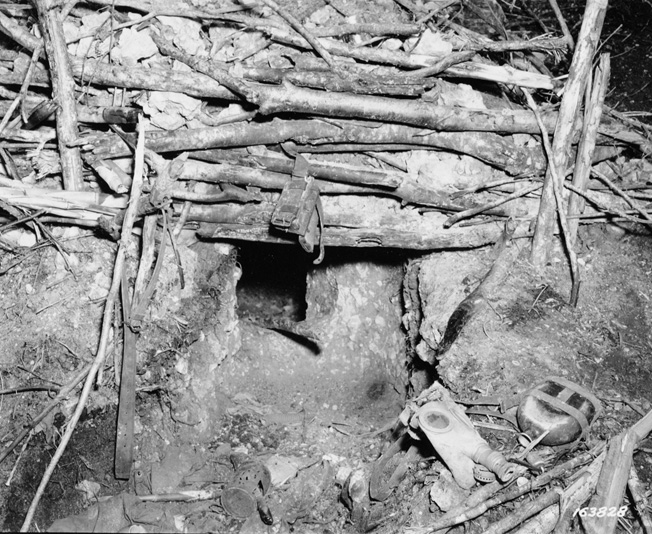
During the afternoon and evening, Marines rooted out stubborn Japanese defenders with small arms and hand grenades. The Americans at this point in the war did not possess flamethrowers or purpose-built explosive devices, so they had to improvise, and that took time and cost lives. After disposing of the enemy’s forward defense line, Companies C and A moved a little farther to the east. The gathering darkness precluded a Marine attempt to clear the apparently strong and unidentified enemy positions of the main defensive line, so the Raiders dug in for the night.
Japanese Infiltration Tactics
About 10 pm , the Japanese mounted a fierce counterattack, driving a wedge between Company C and Company A, almost isolating the former from the rest of the battalion. Savage assaults against Company A’s exposed flank were were fended off. A second banzai attack, which might have successfully exploited the initial thrust, fell on the front of Company A and was bloodily repulsed.
The Japanese reverted to using infiltration tactics. Throughout the remainder of the night they slipped individuals and small groups into the rear of the American lines. They attacked the aid station and the command post of the 2nd Battalion, 5th Marines on Blue Beach. In addition, during the early hours of the 8th, Japanese infiltrators made five separate attacks on and near Raider battalion headquarters at the governor’s residence. The attackers were wiped out in hand to hand fighting. During the desperate fighting near the battalion command post, Colonel Edson tried to summon reinforcements, but his radio communications were out.
Later that morning, reinforced by Company’s E and F, 5th Marines, which landed on the north shore above Hill 281, and by 2nd Battalion, 2nd Marines, which reinforced the main U.S. line moving east along Tulagi, the leathernecks surrounded Hill 281 and the ravine sheltering their foe. After delivering lengthy barrages of 60mm and 81mm mortar fire, they used improvised TNT explosive devices to eliminate the numerous Japanese positions.
By 3 pm, the tenacious and often suicidal Japanese resistance on Tulagi was broken. The battle had cost the Marines 45 dead and 76 wounded. The Japanese suffered 347 killed and just three captured. Japanese prisoners reported that about 40 to 70 Japanese soldiers had escaped Tulagi by swimming to Florida Island. Over the next two months, they were hunted down by Marines and native patrols.
A Reputation for Edson and the 1st Raider Battalion
The 1st Raider Battalion performed well during its baptism of fire on Tulagi. Both officers and enlisted men exhibited daring, bravery, and individual initiative. Major Kenneth D. Baily demonstrated the type of leadership commonly found in the unit. When an enemy machine gun held up his company, he personally circled around the offending weapon, well placed in a coconut log bunker, crawled on top, and shoved a hand grenade into the firing aperture. He was wounded in the thigh.
Colonel Edson established his reputation for courage by spending most of his time on the front lines, where he contemptuously exposed himself to the enemy’s heaviest fire. More importantly, he aggressively employed his command in battle, taking the fight to his adversary and steadfastly defending his positions when attacked.
The Assault on Gavutu and Tanambogo
While the fighting raged on Tulagi, the 1st Parachute Battalion, under Major Robert H. Williams, was tasked with capturing Gavutu and Tanambogo. The attack was to commence four hours after the landing at Tulagi. Insufficient numbers of landing craft to conduct both the Tulagi and Gavutu oeprations dictated that the landings could not occur simultaneously. As a result, the defenders of Gavutu and Tanambogo were prepared for their enemy’s assault.
Each of those islets was dominated by a single elevation, Hill 148 on Gavutu and Hill 121 on Tanambogo. The islands were surrounded by coral reefs that allowed an approach only from the east. The terrain channeled any attacker into a narrow funnel dominated by high ground on two sides.
Defending Gavutu were about 240 men, mostly laborers from the 14th Construction Unit, buttressed by a 50-man platoon of the 3rd Kure SNLF. On Tanambogo were the 303 crew and maintenance personnel of the Yokohama Flying Boat Air Group under Captain Miyazaki. Only the SNLF members were equipped and trained to fight as ground troops. However, the constricted terrain and well-placed defensive positions greatly aided the other defenders, allowing them to give a good account of themselves. The Japanese on both islands were entrenched in bunkers and caves, and each spit of land was within mutual machine-gun fire support of the other.
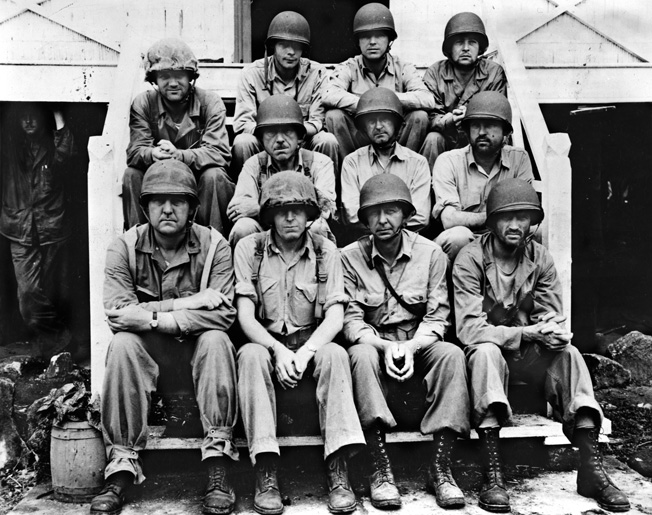
As the parachutists approached Gavutu Harbor at noon, the island was rocked by a five-minute naval bombardment carried out by the light antiaircraft cruiser USS San Juan and the destroyers Monssen and Buchanan, followed by a 10-minute air assault by dive bombers from the aircraft carrier Wasp. The efforts did little damage to the Japanese defenses except for eliminating an 75mm gun on Hill 148. The seaplane landing ramp on Gavutu was damaged to such an extent that the Marines could not disembark on it. The Marines were forced to land on a more exposed part of the dock.
An Aborted Assault on Tanambogo
After getting ashore, the attackers of the first wave, Company A, pushed 75 yards inland but were met by withering fire from the Japanese on Hills 148 and 121. The second and third waves, made up of Companies B and C, landed on the dock and immediately came under Japanese rifle and machine-gun fire, so heavy that in a few minutes 10 percent of both units were cut down, including the battalion commander.
By 2 pm, elements of Companies A and B had taken Hill 148 after extensive use of grenades and improvised explosive charges, as well as close-quarter fighting to clear the many fortified positions on the heights. Unfortunately, this hard-fought Marine triumph was marred by the arrival of American Douglas SDB Dauntless dive bombers responding to an earlier call for air support. The Marines had no sooner taken control of Hill 148 than the planes attacked the summit, killing several Marines and wounding others. This tragic accident would not be the only such friendly fire incident during the struggle for Gavutu and Tanambogo. When night fell on the 7th, Gavutu was still not secured and Tanambogo had yet to be taken. The acting battalion commander, Major Charles A. Miller, who had replaced the injured Major Williams, requested reinforcements.
General Rupertus responded to Miller’s appeal by sending Captain Crane’s Company B, 2nd Marines, then on Florida Island, to subdue Tanambogo. After landing under heavy fire and suffering severe losses, Crane evacuated his wounded on boats and had them sail back to Gavutu while he and a dozen men sprinted along the causeway back to Gavutu. The Japanese lost only 10 men in the aborted assault on Tanambogo that day.
A 30-Minute Naval Bombardment
Throughout the night, the Japanese staged persistent attacks against the Marines on Gavutu under the cover of heavy rain and thunderstorms. Hoping to get his attack on Gavutu moving, General Vandegrift ordered his last reserves, Lieutenant R.G. Hunt’s 3rd Battalion, 2nd Marines, to land there. Hunt’s men assisted the paratroopers in exterminating the last Japanese defenders on Gavutu, enduring machine-gun fire from the Japanese on Tanambogo. During these mopping-up operations, a second American naval air attack killed four Marines and injured eight.
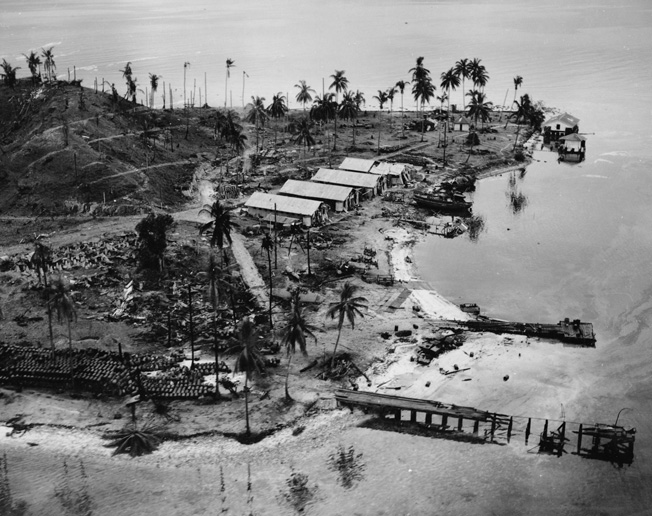
With Gavutu pacified by noon, Hunt ordered an attack on Tanambogo at 3:30 pm after a 30-minute naval bombardment by San Juan and Buchanan, the latter firing at close range. At 4:15 pm, Company I, in conjunction with two M5 Stuart Light tanks under Lieutenant R.J. Sweeny (who was killed in action later that day), reached the island by water. One tank assailed Hill 121 from the south, while the other did the same from the east. Both metal monsters were closely supported by Marines. However, one of the tanks moved too rapidly ahead of its accompanying infantry. As the tank approached its target, Captain Miyazaki and other Japanese officers swarmed over the vehicle, setting it ablaze with gasoline-soaked rags, killing three of its crewmen and savagely beating a fourth. An immediate hail of American small-arms fire soon killed the captain and 41 of his comrades, who fell around the burned-out American tank.
Meanwhile, the second armored fighting vehicle was able to knock out enough enemy bunkers using its 37mm main gun to allow a platoon from Company K of Hunt’s battalion to charge across the causeway onto Tanambogo at 4:40 pm. This provided the needed muscle to finally break the Japanese hold on the islet. Although the island was declared secure by 9 pm on August 8, isolated night attacks by the Japanese continued. It was not until the next day, after savage fighting with bayonet, rifle butt, and hand grenades, that the remaining defenders on Tanambogo were completely eliminated.
Of the 1,300 men committed, 70 Marines were killed and 87 wounded during the fight for Gavutu and Tanambogo. The Japanese lost 516 killed and 20 prisoners, 15 of whom were Korean laborers who had fought alongside their Japanese masters.
“A Soldier’s Battle, Unremitting, and Relentless”
American deaths sustained in the capture of Tulagi, Gavutu, and Tanambogo totaled 122, while 863 Japanese perished in the three engagements. The 1st Marine Division’s after action report noted: “The combat assumed the nature of a storming operation from the outset, a soldier’s battle, unremitting, and relentless, to be decided only by the extermination of one or the other of the adversaries engaged. Soldierly behavior was manifest wherever the enemy was encountered.”
Shortly after Tulagi was taken by the Marines, Gavutu anchorage began serving as a giant naval base and refueling station. Purvis Bay assumed a significant role as a center for light naval forces operating in the middle and upper Solomons. Tulagi’s harbor also functioned as a temporary repair center for vessels damaged in the many naval battles that occurred in the Guadalcanal vicinity between August and December 1942. Later in the campaign for Guadalcanal, Tulagi became a U.S. PT Boat base.
After Tulagi, Gavutu, and Tanambogo were firmly in American hands, the majority of the Marines who wrested these islands away from the Japanese were transferred to Guadalcanal to help defend Henderson Field, the key to the victory in the Solomons, from repeated attempts by the Japanese Army to recapture it.
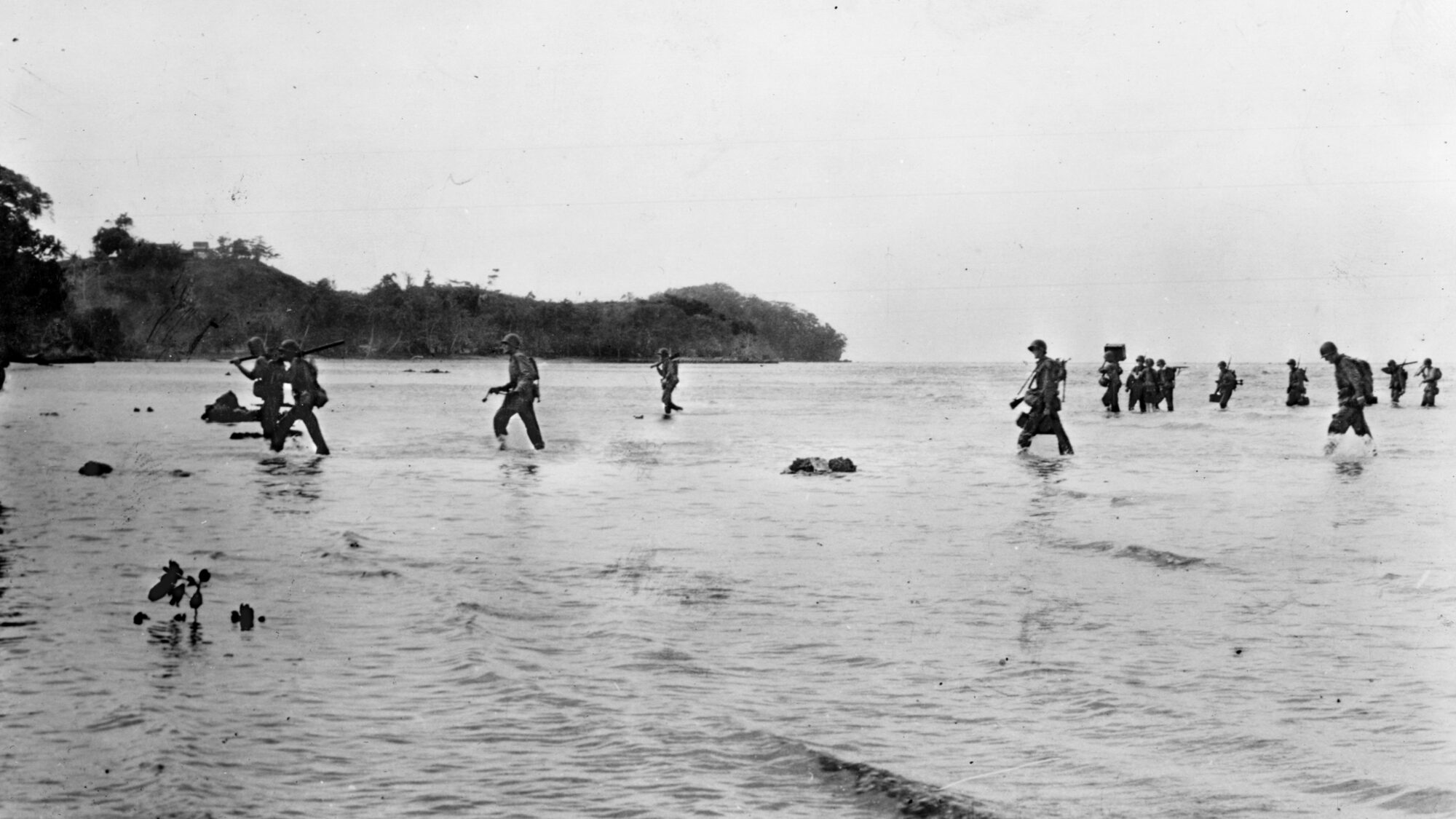
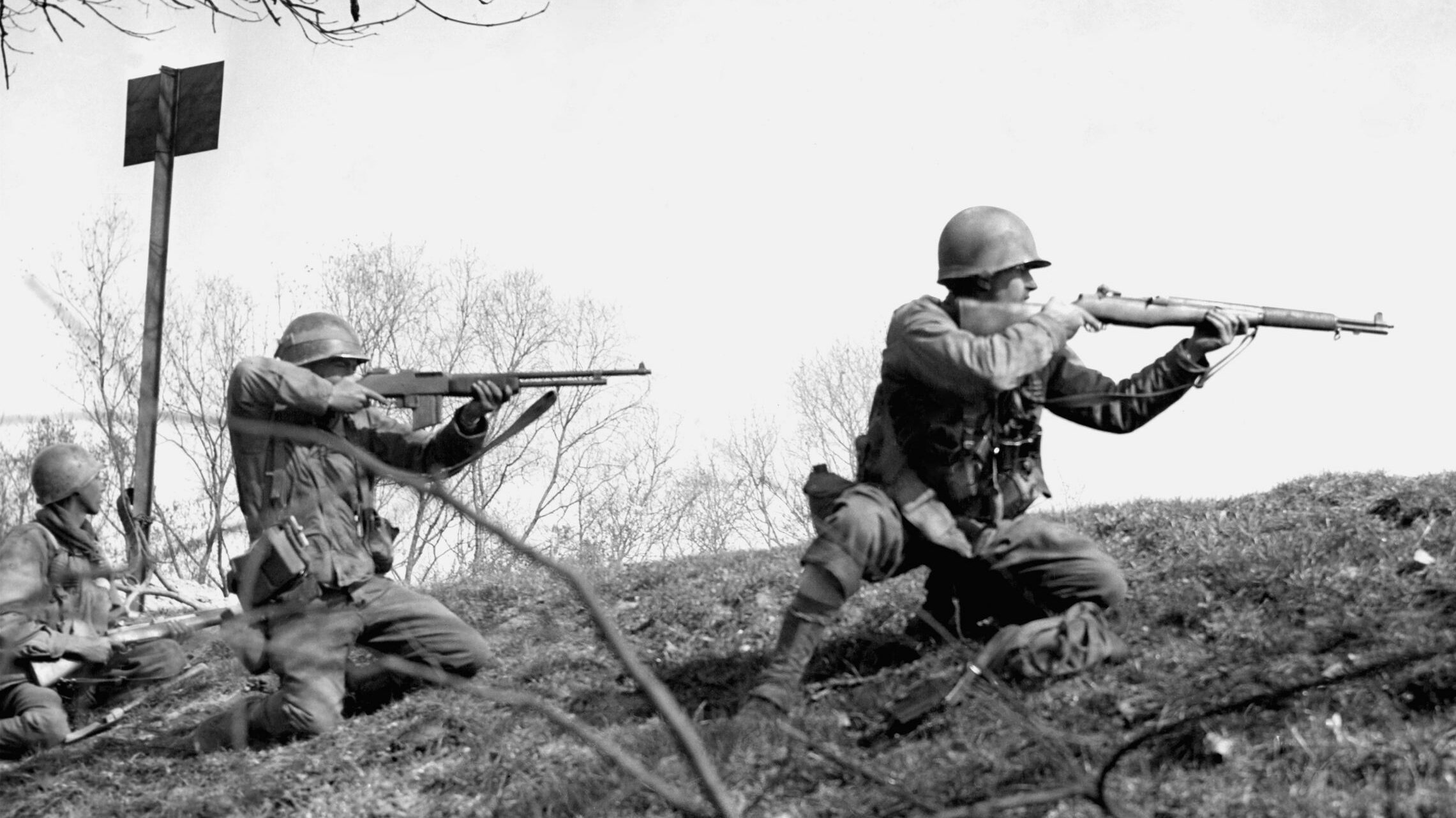
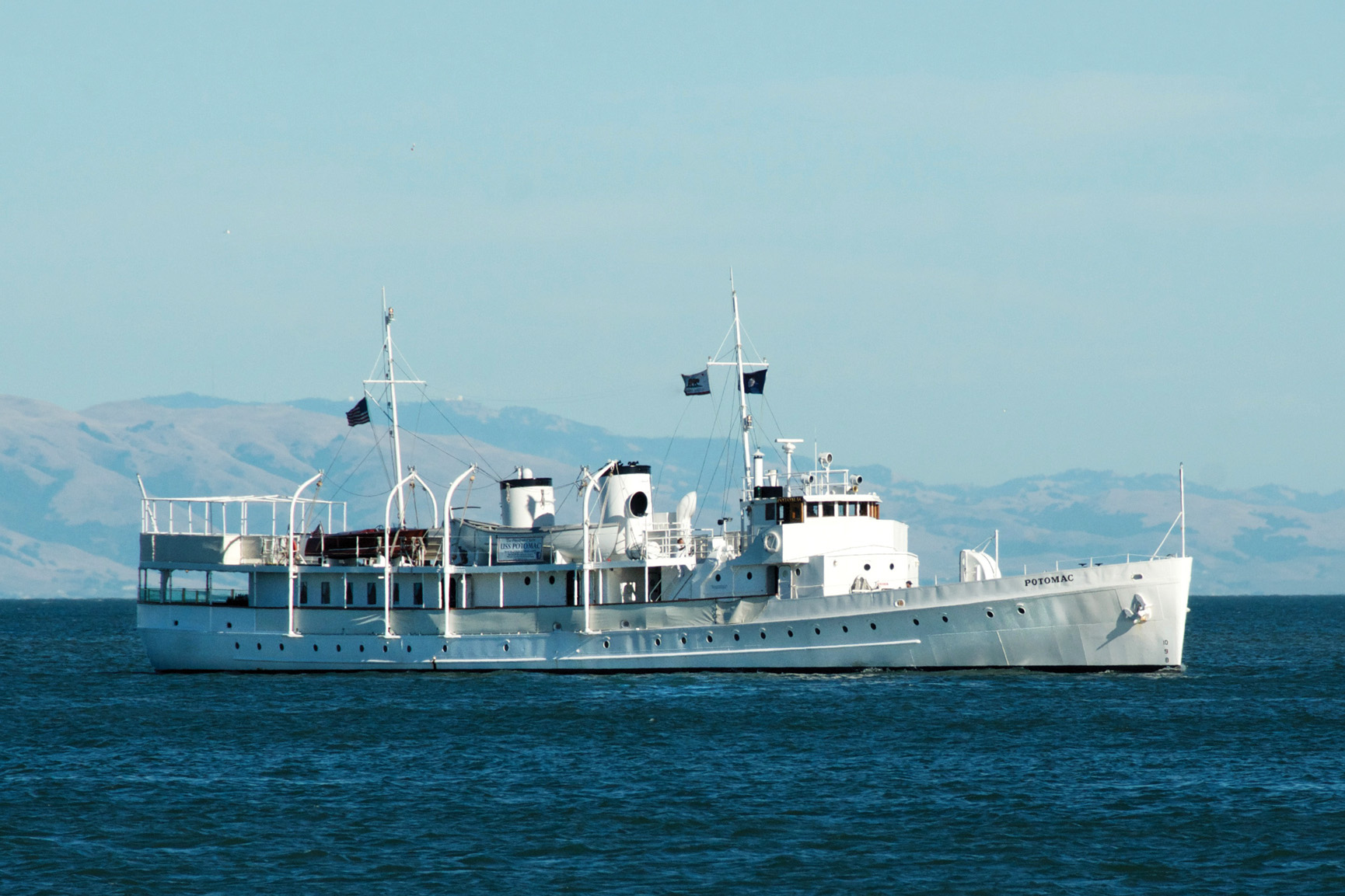
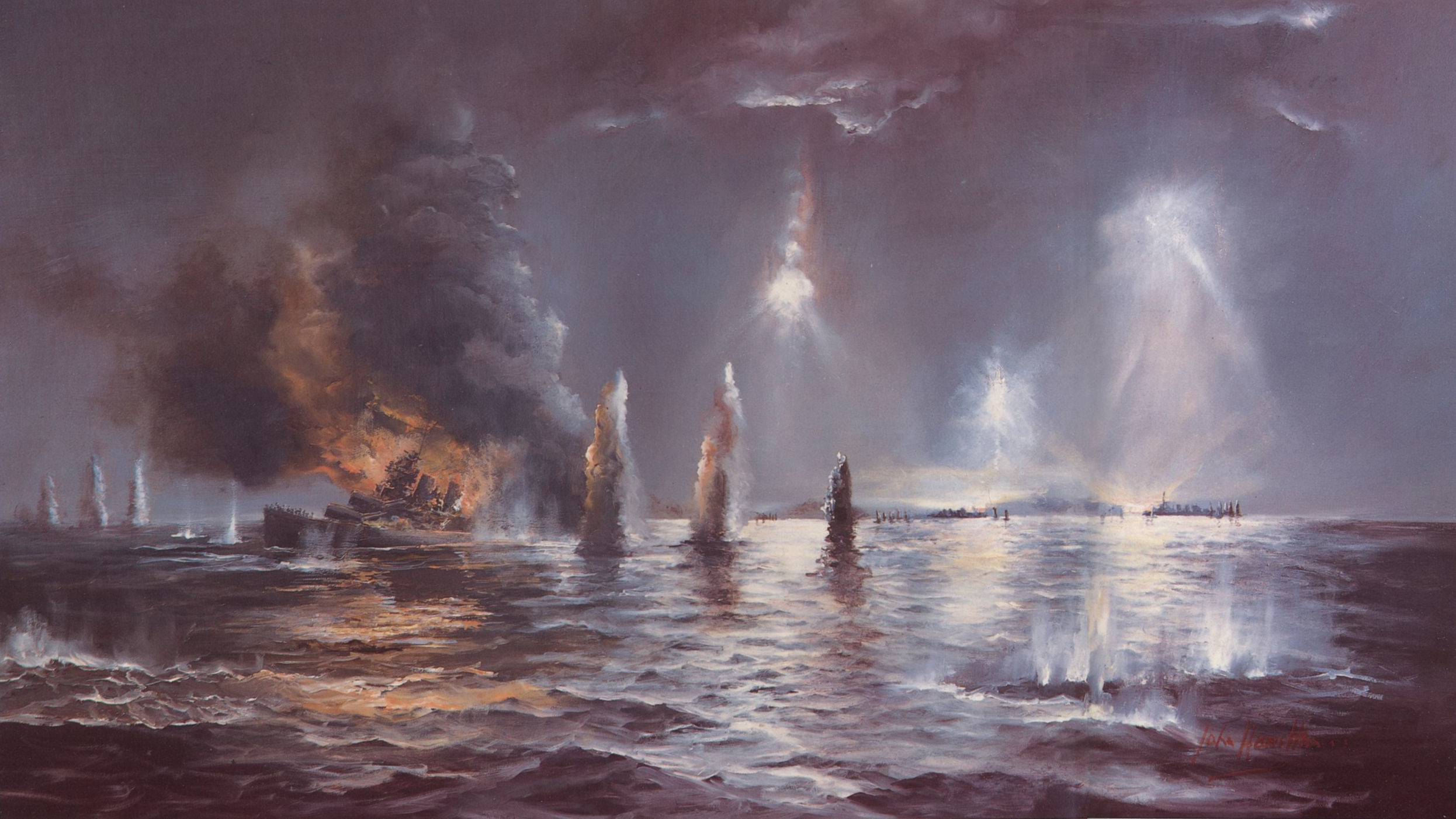
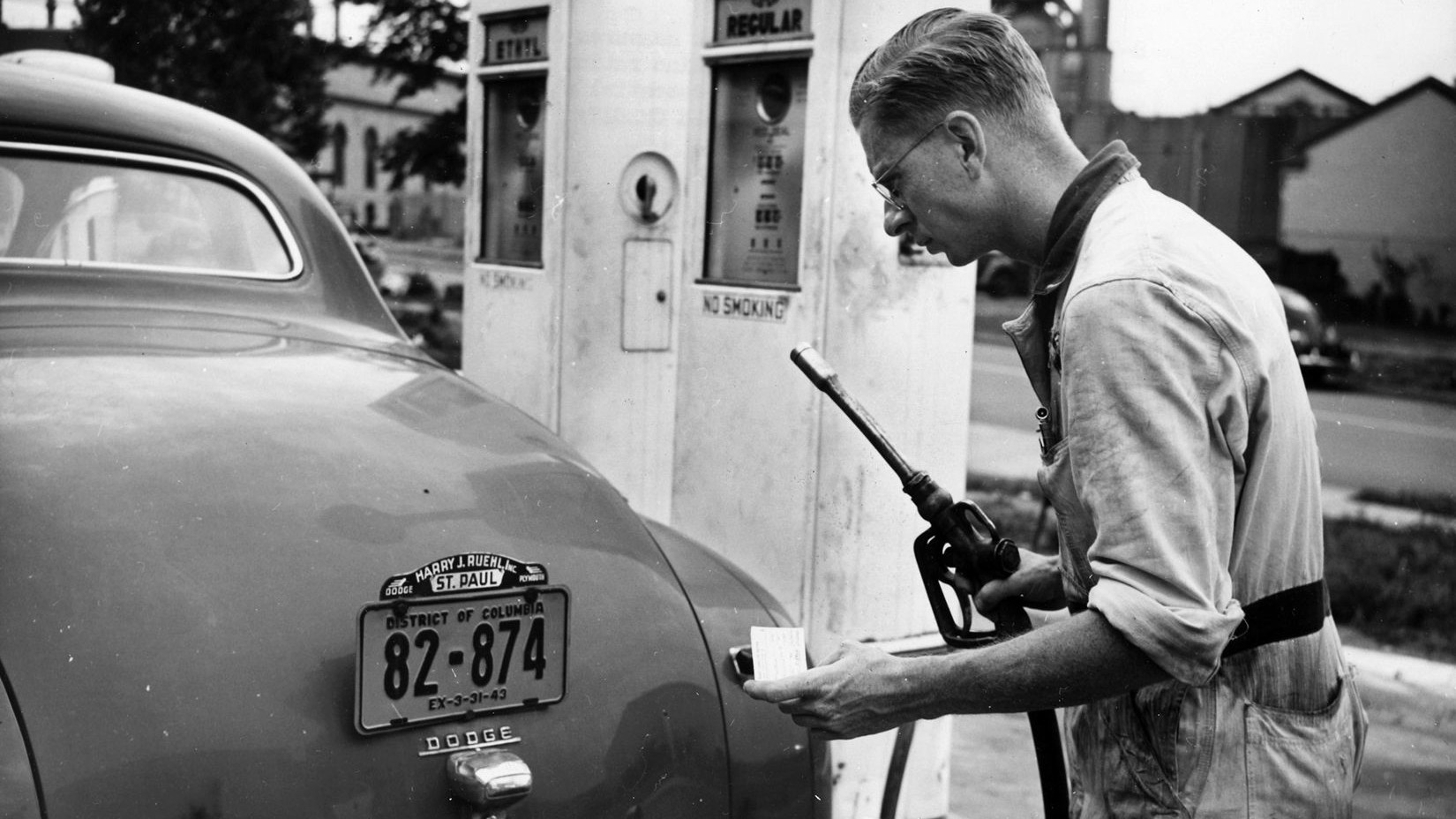
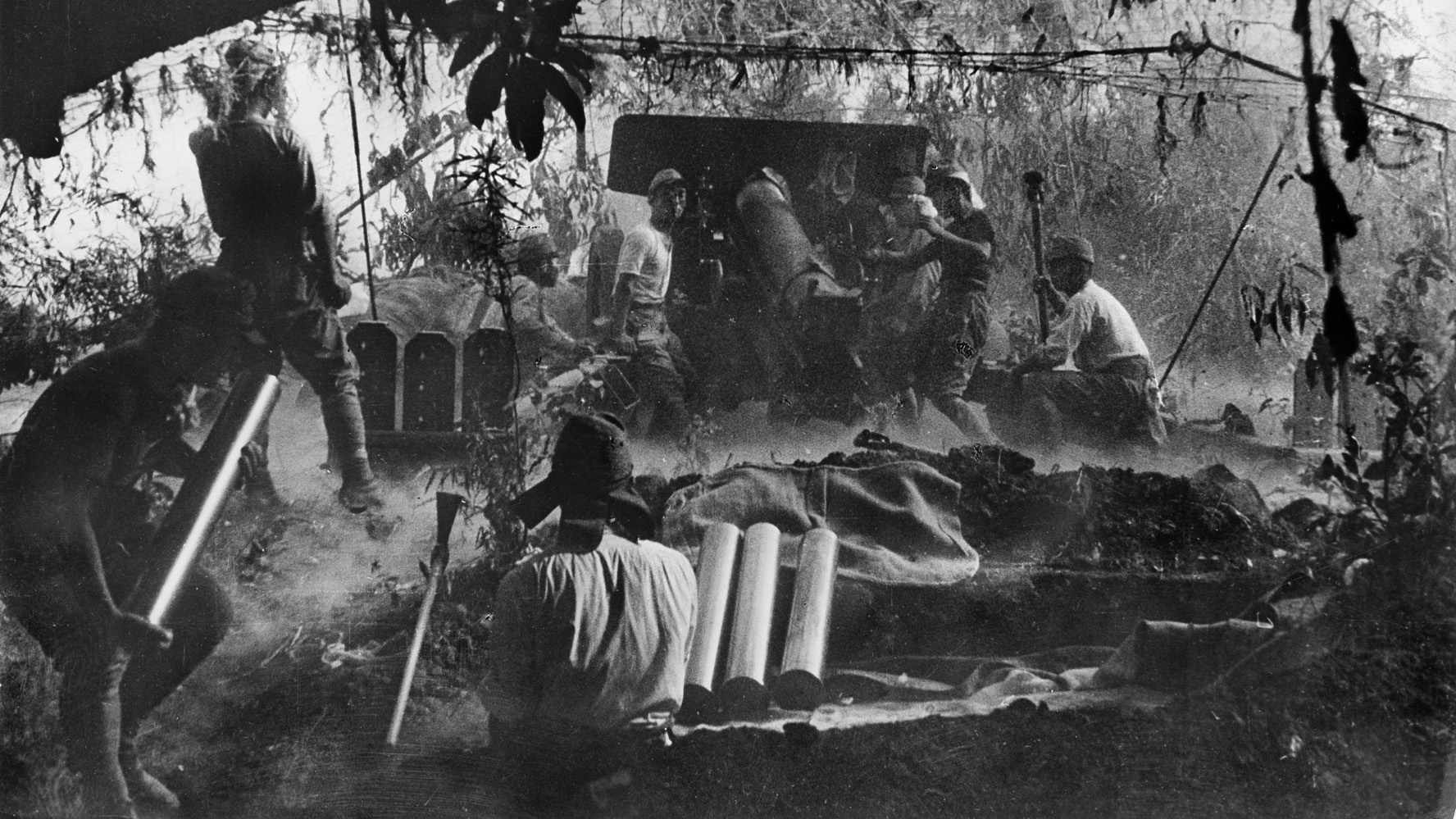
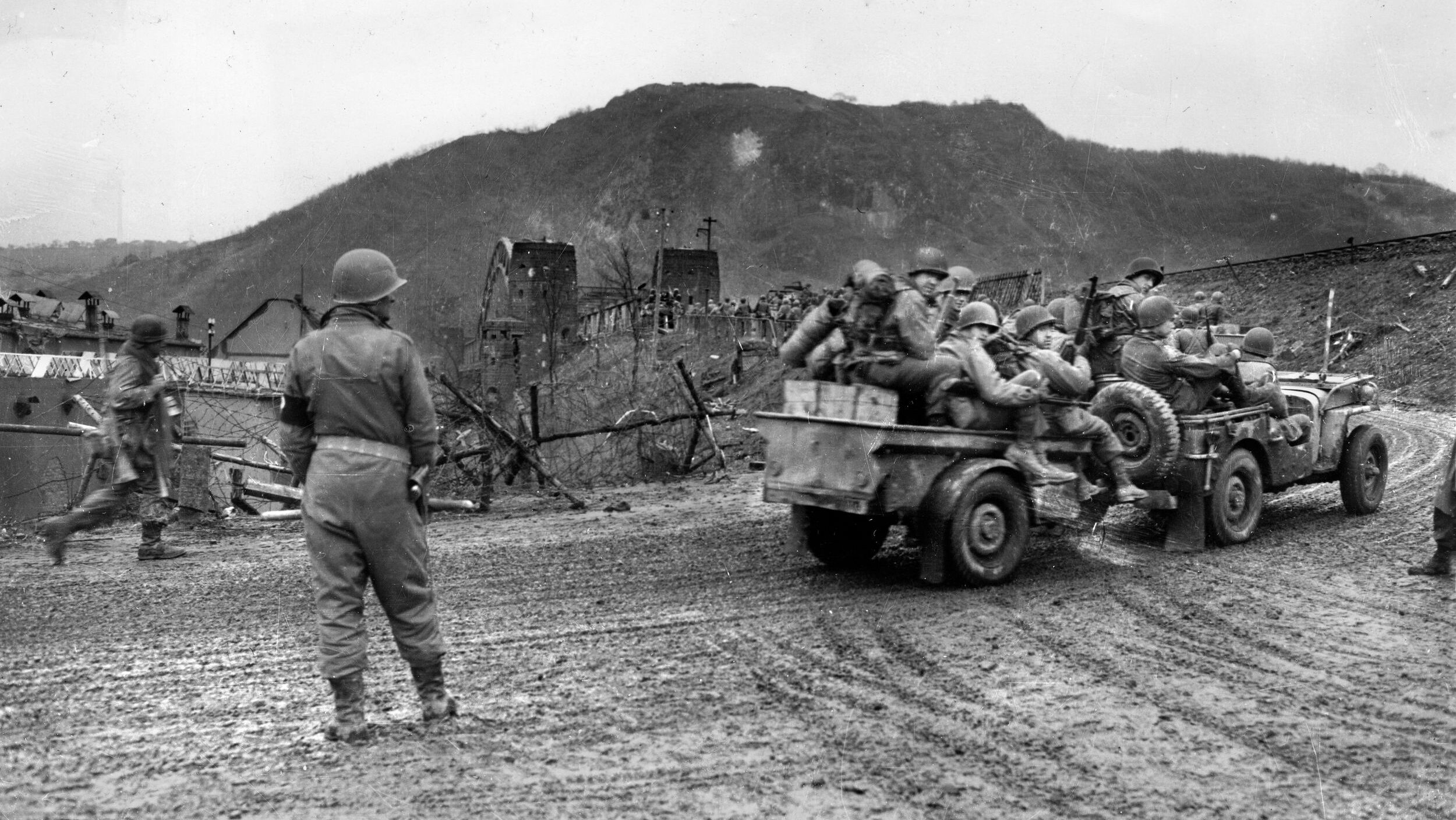
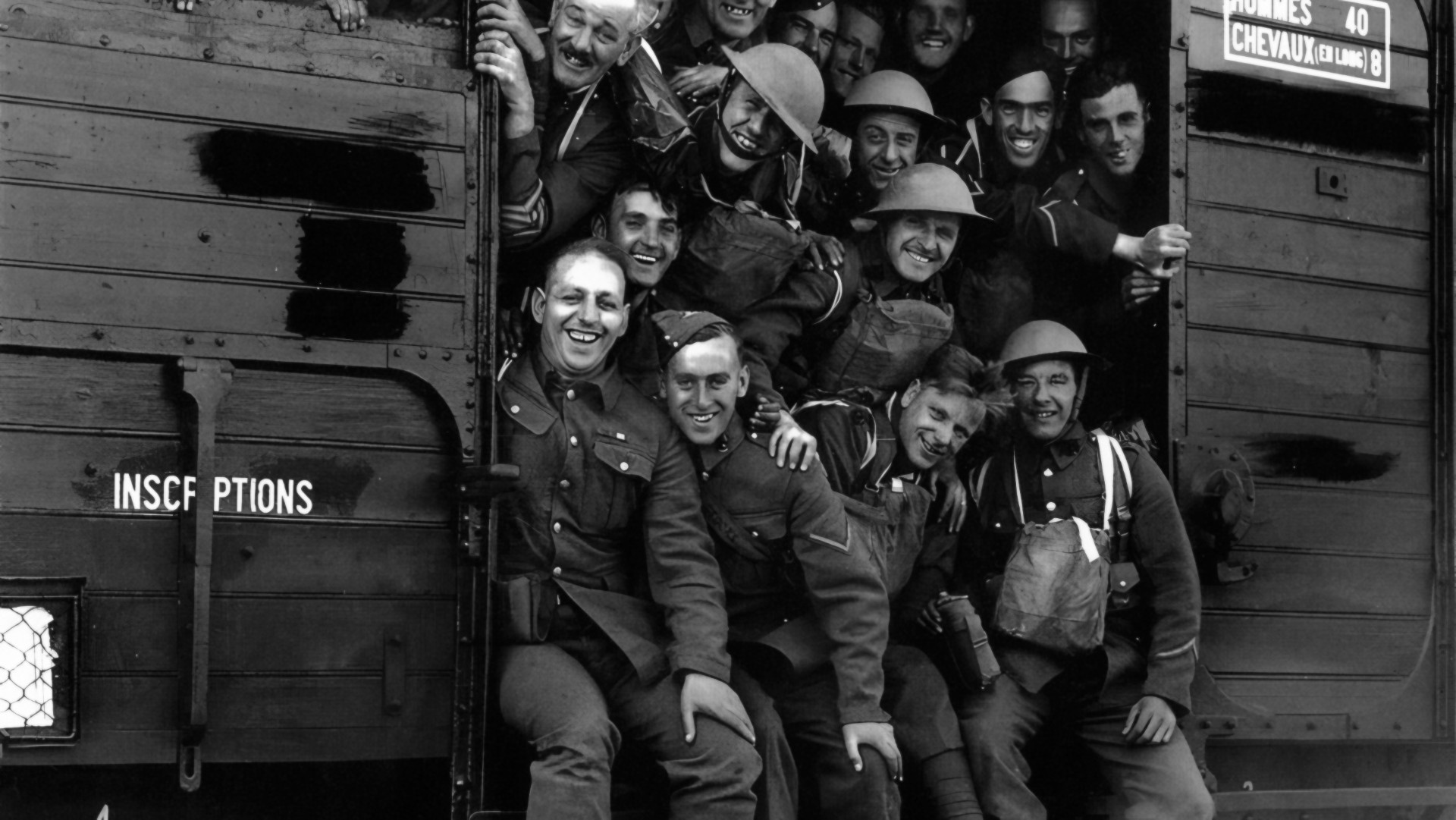
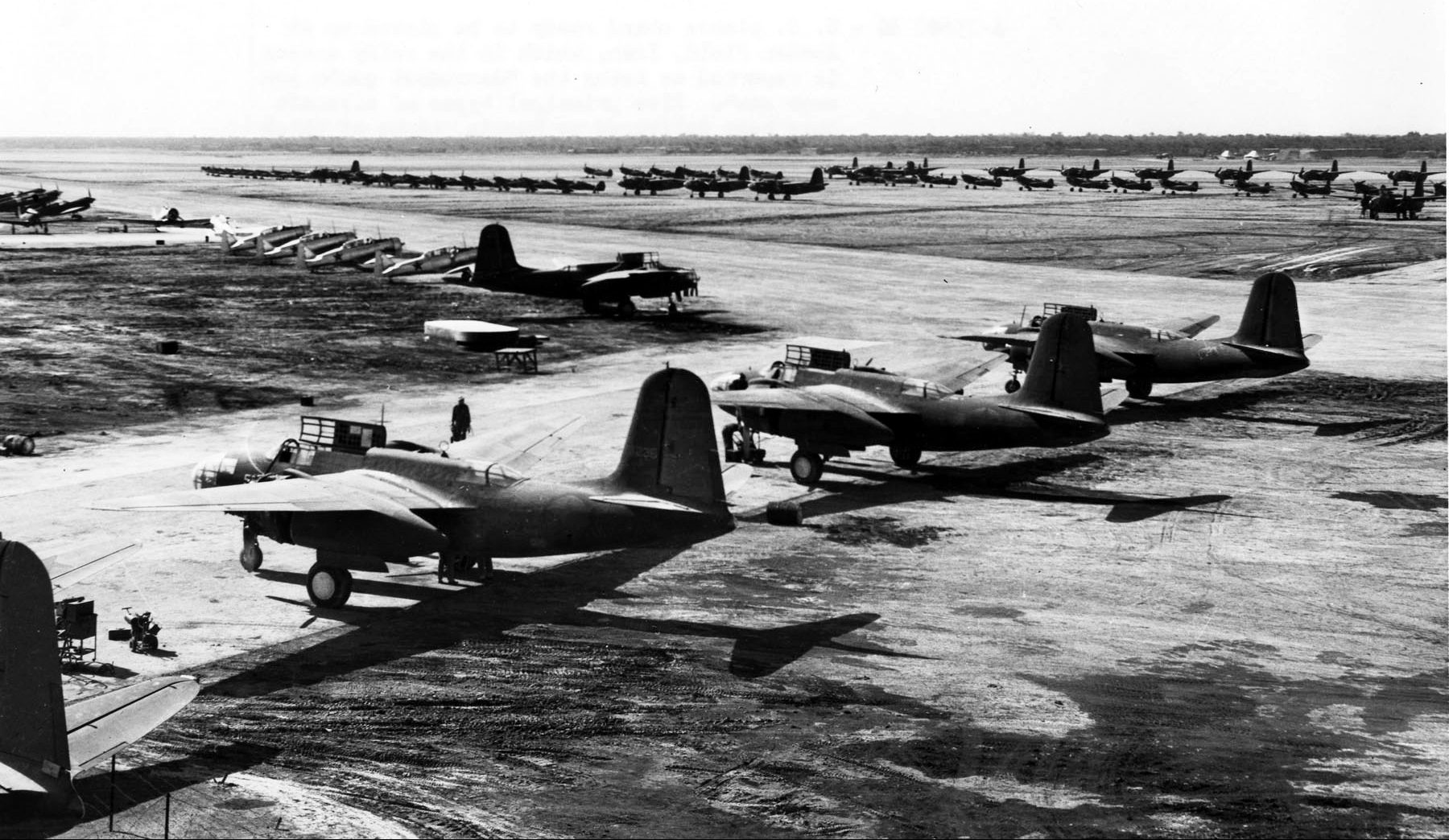
Good reading
Thoroughly enjoyed that. I’ve been to Guadalcanal and I was somewhat aware of Tulagi, Gavutu and Tanambogo, but I am certainly much more informed now thanks to your article. Those first days of USMC operations were a steep learning curve on how to deal with the Japanese and the environment. When I was a boy my Dad (combat veteran) had a Friend who had been in the 1st Division on Guadalcanal – he’d been wounded and sent to Australia where he returned to live after the war – his name was Oscar – I wish I had known more about all this back then so I could have asked Oscar all about it. How rightfully proud all Marines must feel.